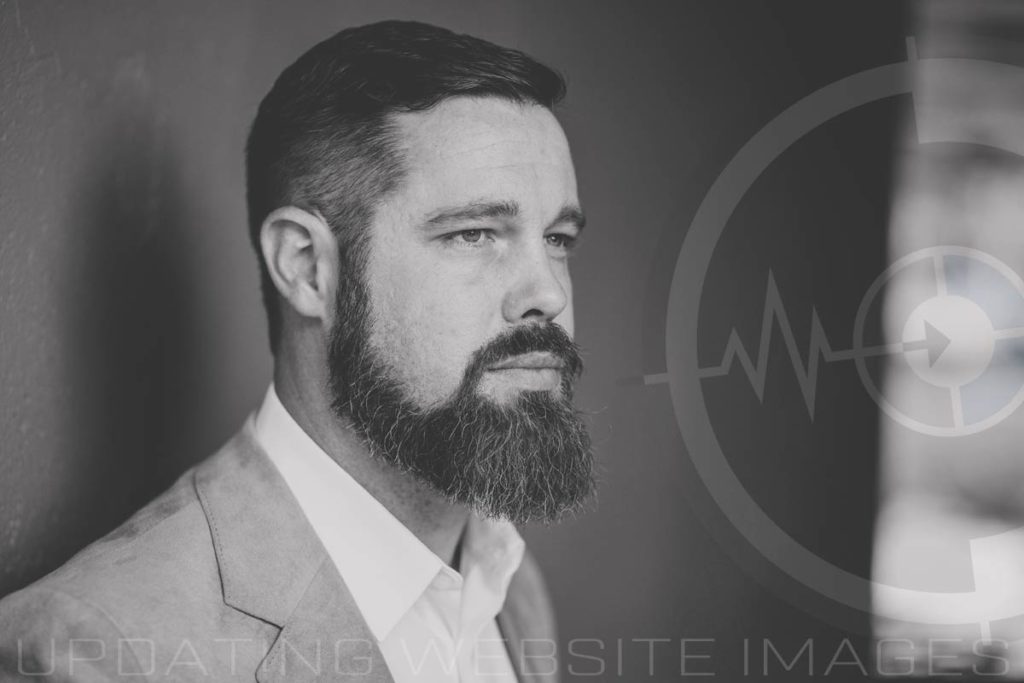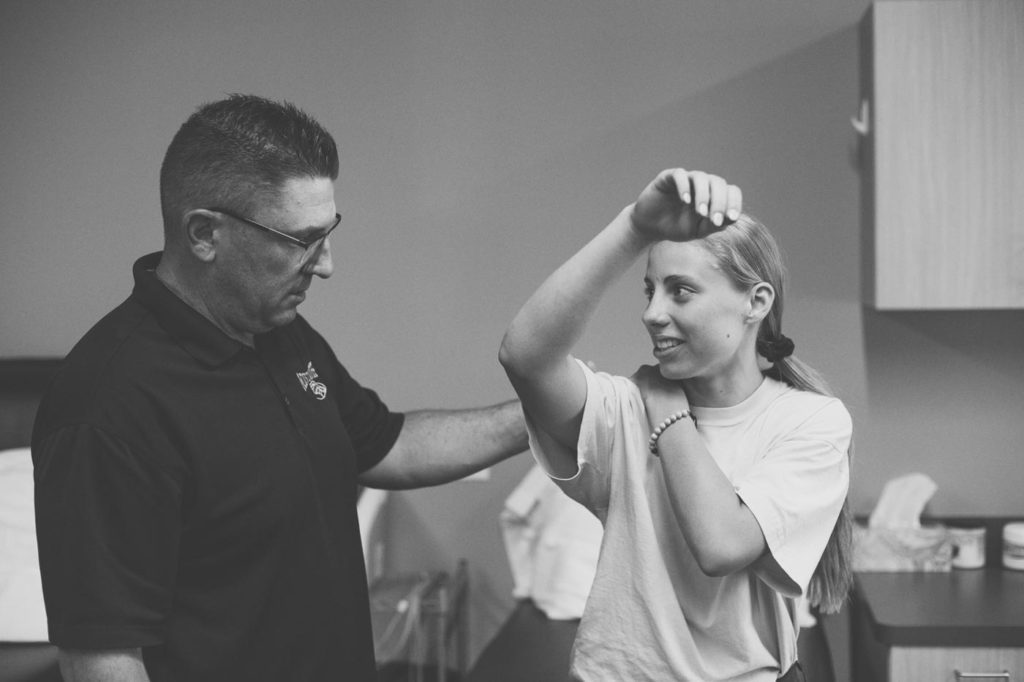Nov 19, 2021 | blog |

In a previous article, I mentioned how a wide net approach can be costly. In the past, you used to be able to bid on uber specific keywords for traffic and potential leads. Today, things have changed. Now that EXACT MATCH search terms are gone, advertisers have to deal with the cards they’re dealt – or do they? Although you may have no idea what I’m talking about, here are 5 ways the decision by search engines is costing a number of businesses a lot of time and money.
1. Advertisers Are Wasting Impressions.
When you’re unable to bid on exact match keywords, you’re advertisement is getting shown to hundreds of other consumers in other markets. This is good when you’re looking to build general awareness for a product most everyone needs – but if you’re selling something specific, it’s essentially a crapshoot. When it comes to online search, most people are paying for clicks. How many times have you clicked on an ad accidentally or just to see what it is?
Even though you have zero intent, the advertiser is still charged. This is why it’s important for them to ONLY get in front of people searching specifically for their product or service. When impressions are being wasted on out-of-market users, it’s nearly impossible to guarantee quality leads. Some industries pay more that $80/click. This can be devastating if you’re all of a sudden forced to deal with irrelevant traffic.
2. Advertisers Are Paying For Bad Clicks.
On Google, every time an ad is shown and clicked, the search engine’s bank account gets heavier. It may not be a big deal to the tech giant, but every bad click (or potential lead) takes away from the advertiser’s budget. The more money that gets spent, the less the ad is shown. Wasting spend with AI technology directly impacts a company’s ability to make money.
Even when “leads” are not out of market, most of them aren’t qualified (ready to buy). This too has to do with relevant bidding. Aside from costing them potential business, a low quality lead can become a huge distraction. In most cases, a mistaken caller is either extremely rude or overly talkative. Both of which take up time and energy that could be spent on an actual customer.
I’ve seen businesses that had a steady $125 CPA (cost per acquisition) a few years ago to now paying close to $400 per lead! Another client I used to work with went from $65 to $225! Letting search engines remove EXACT MATCH and dictate who sees your ad is absurd. Every aspect of a bad click is costly. But Google and Bing aren’t slowing down. Even Duck Duck go is running ads now.
3. Automation Is Killing the Art of Strategy.
Another thing that EXACT MATCH termination has impacted is the need for search ad managers. In the past, there was a lot of value in paying top dollar for a paid strategist that was good at their job. The introduction of user friendly tools and automation has lowered the need for contractors that excel at targeting user intent. When everyone is forced to lean on an algorithm for results, it is rather discouraging to say the least.
4. Google Going Hard After New Advertisers.
With long time advertisers falling off the bandwagon and tenured strategists losing work, Google and their friends are eager to acquire their own new customers. Based on all of their recent decisions and marketing efforts, they’re clearly interesting in clueless small business owners and new entrepreneurs. Ya know, those that have little to no experience managing ads. The more they can get these people to believe they can do it themselves, the more they’re able to sustain the one sided decision to remove EXACT MATCH keywords.
Nov 19, 2021 | blog, consulting |
We can all agree that life has been rather strange for the past year and a half. Thousands of businesses have been forced to shut down and many others have struggled – to no fault of their own. In all honesty, it has been tough to see. Google hasn’t helped by taking advantage of high amounts of adspend. Neither have social media giants. Silencing certain groups of people and throttling original content has really impacted lead generation. But the external things can’t be blamed for failure. Many businesses screwed up in 2021 because they didn’t have a plan and eventually wavered from their brand values.
Be Careful Where You Make Your Changes.
It can be hard to relinquish something you’ve grown accustomed to. But the hard reality is, what has worked in the past may no longer be viable. At some point, you’ve got to dig into purpose and passion. Sadly, many leaders failed to PreFocus this year. When times got tough, some ended up investing in sketchy (or shady) marketing methods just to get by.
My point is, justifiable compromise can tarnish a company’s image and reputation fast. Now, I’m not here to sit on a high horse and shame businesses for screwing up in 2021. I’m just trying to remind people there isn’t just a mainstream way to go about things. Truth be told, this year was a little rough for me. A number of my clients refused to acknowledge some pivots that needed to occur. With so much information out there, there are just tons of ideas to grab onto.
Today, it’s really difficult to garner trust in the galaxy that’s labelled “marketing” – and rightfully so. But decision makers also need to know what they don’t like to hear. If you’re wanting to step up your game in 2022, then it’s important to learn from some of the ways businesses screwed up in 2021. If you really do offer something special, then you can’t forget it.
How Businesses Screwed Up in 2021:
Nothing is worse than seeing a quality experience succumb to the culture. Generating leads will always present a challenge. Some instances are tougher than others. But I encourage you to remain creative and avoid shortcuts that can cost you layers of differentiation. Here are 6 business owner pitfalls you’ll want to steer clear of.
1. Desperation.
The ugliest thing to watch over the past few years has been the behavior of many businesses. Nearly everyone is identifying with something these days. But did hanging a Trump flag, posting a black square, shaming mask wearers or flying rainbow colors really boost brand clarity? How about general trust? Did you feel as though you had to join a movement to secure the group’s business? I hope not and wish more people would see the pander.
When you’re desperate to get attention in a time that everyone wants to be heard, it’s a recipe for disaster. Following trends for likes is icky anyways. If you really want to be seen as a unique experience that people can love you can’t be swayed by the noise. Politics and news stories will never give your business the exposure it needs.
Another thing businesses make the mistake of doing is punishing their loyal customer base for setbacks. Whether this involves solicitation attempts, higher fees or different requirements – your desperation can’t be boding well. If you’re panicking after years of success. you have to realize when you’re digging a deeper hole. Desperate times don’t have to call for desperate measures and acting out of character is dangerous. Consistency and the long game is a lot easier to sustain.
2. Unthoughtful Risk.
The second way businesses screwed up in 2021 is similar to desperation. Any type of strategy that bears fruit has been grabbing the attention of struggling CEOs and marketing managers everywhere. Like trends, the momentum can be extremely appealing and misleading at the same time. When emotion and fear of failure are involved, it’s easy for most business owners to blindly follow what’s worked. Instead of trusting in themselves, they look to feed off the coattail.
This is dangerous in so many ways. Every business is different. Even companies in the same industry cater to a unique market. Forgetting these foundational facts and going all-in on someone else’s win is not worth the risk in my book. Sure, there are top 10 hacks and business consultants slash realtors slash nutritional supplement influencers – but duplication is rarely the answer. Consumers want you to be more than an option. It can be easy to forget this during uncertain times.
3. Tough Sales Focus.
Nothing bothers me more than a company that sells aggressively in order to close deals. It tells me people have to be talked into making the purchase. At the same time, you can’t blame most businesses for shifting gears this way in 2021. Moving a complete operation online or getting hit hard by inflation doesn’t give you much of a choice but to sell harder. Since many leaders had their backs against the wall, a number of honest people have been let go. These types of cost cutting measures have only hindered quality.
In my opinion, far too many businesses screwed up in 2021 by leaning on crafty sales reps and spammy processes to get by. I’m not saying I don’t understand why – I just think there are better ways to ensure you don’t jeopardize brand perception. Now that most people are sitting at home, many companies have resorted back to cold calling and salesy emails. Even social media profiles are riddled with offers and promises.
The desperation that alters one’s train of thought can eventually transform everything. When your back is against the wall, it can be easy to remember everything about why you started.
4. Roots Were Forgotten.
Any consumer can tell you what makes a business special. When one isn’t, it’s simply just an option. Many people forget that they don’t see their company the same way consumers do. They’re not obligated to appreciate your work if they don’t want to. This makes nearly any business expendable when you think about it. So when a founder or creative team goes outside of who they really are and what the brand stands for, they’re disconnecting value.
Companies that forget about their brand roots usually make poor decisions. Steady profits tend to make it difficult to hold onto passion. When the fire isn’t there, it ca be easy to drift away from what got you there in the first place. Peter Drucker talks about this in his book, The Effective Executive. You can water down clam chowder in many ways. Sticking to your bread and butter and the reason behind it is a sure way to come out of a hole and retain loyalty.
To be frank, a lot of businesses screwed up in 2021 by playing the waiting game. Instead of working to get ahead with their identity and what they stand for, many decided to complain. Social media makes it tough but this is never good for morale. When you forget your roots and lose the passion, it can be hard to recover. But if you’re able to double down and remember where you came from, you can make waves for all the right reasons.
5. Bad Partnerships.
This one is pretty self explanatory. In any year, bad deals occur. Affiliations don’t work out. But a number of businesses screwed up in 2021 when they put their faith in someone else to pull them through. Believe it or not, not all partnerships work out. They may sound good, but the business owner is typically put in a position with everything to lose. Bigger companies know this and investors are usually willing to take risks on good companies that are low on cash.
Far too many of the “little guys” (with the biggest value) were crushed after signing bad contracts or giving away stake. But in many of these cases, a simple strategy would have gone a long way. Companies lose control of their identity when they let other people sell them – instead of selling their brand. At the end of the day, discernment is what helps you find a lasting partnership that benefits everyone involved. Unfortunately, they were few and far between in 2021.
6. BONUS: Wide Targeting.
Many of you aren’t aware, but pretty much all of the paid search platforms did away with EXACT MATCH bidding this past year. This means, advertisers can no longer bid on specific search phrases. Instead, their ads are shown to adgroups (keywords grouped by relevancy). The problem is, it’s not very accurate. Say I wanted my shop to show up for people searching for a “quality oil change”. My ad will more than likely also show up under “premium oil filters”.
This is a big deal because most businesses pay per impression (the number of times their ad is served). The cost per acquisition of some of my past clients have almost tripled. Some have even asked me to help – but I don’t even trust the system anymore. Search ads are basically creating irrelevant traffic and wasting the clicks that used to go towards pinpoint bids. It’s really a shame. More than ever before, companies need to be able to find those that need them the most. The highest bidder shouldn’t get the most chances.
If you ever find yourself casting a wide net in hopes you’ll catch something – stop and think. There are so many other things you can be doing to not only drive awareness but loyalty.
PreFocus on a Bright Future.
You might be one of the businesses that screwed up in 2021. But let’s be real here; There probably isn’t one soul that handled the past year with grace. Every day we wake up, we have the choice to do something we love or endure something we hate. No matter what business you run, it takes a lot of grit and hard work. These two aren’t one in the same. Sticking to what you set out to accomplish will ensure you don’t screw up in the future.
Let me know if I can ever be of any help – just be purposeful with everything you do.
Nov 18, 2021 | blog, Photography, strategy |
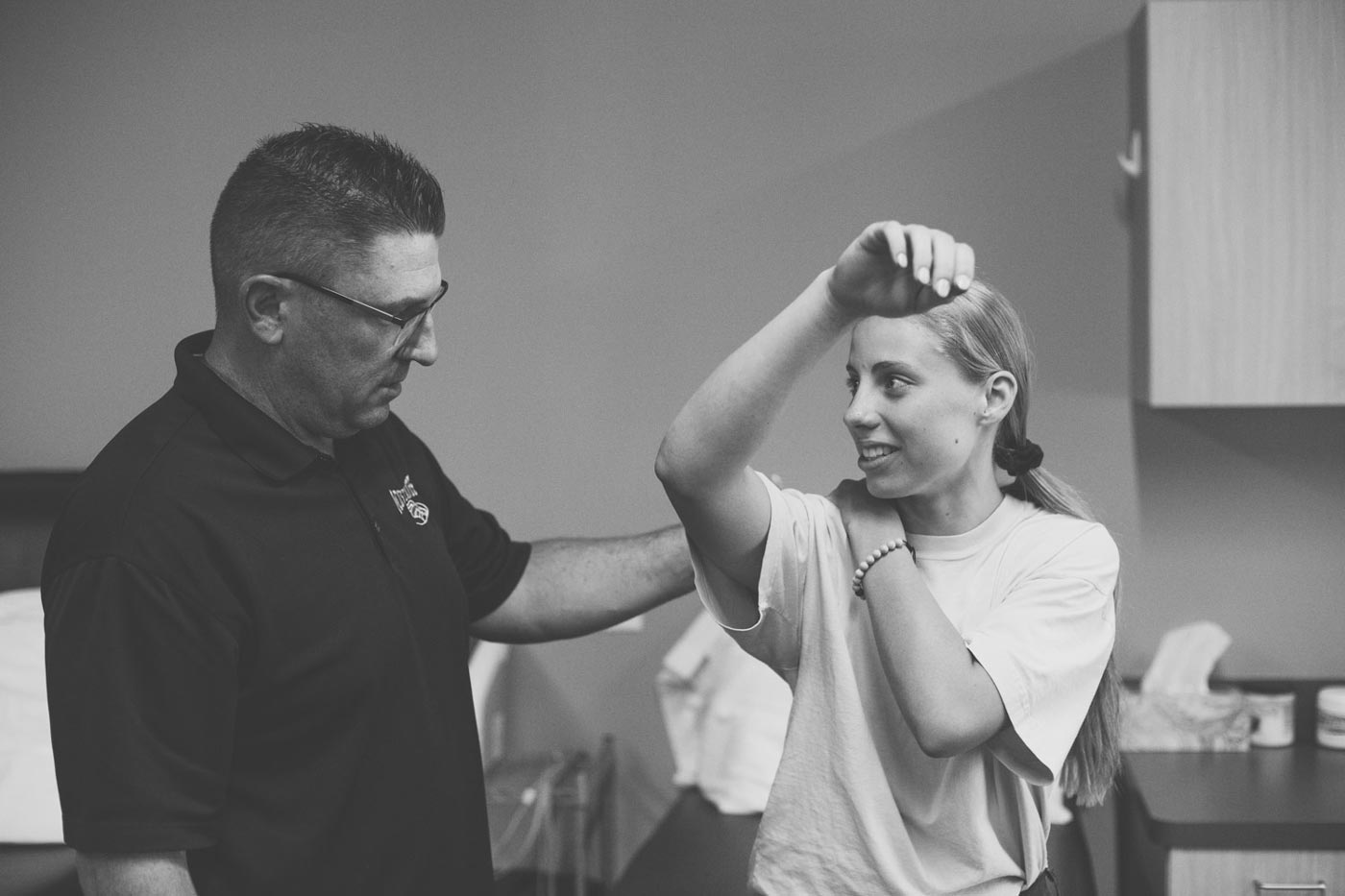
One of the most overlooked elements of branding and marketing is the weight of authenticity. This concerns me because most advertisements don’t actually depict the customer experience – at all. Is it really that big of a deal to create original photography content yourself? Unfortunately, many businesses use stock photos, models, creative directors and actors to make their product or service appear a lot more appealing than it really is. So why isn’t the customer’s subconscious being considered?
Why Take Pictures For Your Business?
Believe it or not, perception doesn’t stop at the sale. Marketing agencies and officials create a dwindling experience when they throw all their chips at the first impression. In their subconscious, the consumer constantly chases the promoted visual. While awareness does matter – a counterfeit culture just isn’t sustainable. A company that leans on originality usually doesn’t have to worry about low satisfaction ratings and minimal market share.
When I ask business owners and CEO’s why they allow fabricated pictures, the main response I get is, “Well, we don’t think our customers care.. Everyone else does it and they’re having success..” They usually believe their failed marketing efforts lie in a blog or media-buying strategy. There’s no desire to create original photography content.
However, succumbing to industry standards or basing decisions on competitor efforts basically means you’re OK with being average. I can’t work with that. I think it’s safe to say any human being would be lying if they said they weren’t interested in who’s making a product or offering a service they’re paying for. Original photography not only satisfies this subconscious desire, it also gives people a reason to browse your content. The amount of time people spend on your website is a major factor for search engine rankings (Google, Bing, etc).

How to Maximize the Use of Your Original Photography.
If you’ve already been publishing a lot of original content on your social media profiles, that’s good. But you’ll also want to make sure some of the media is making it on your website and other local citations. Whether you like it or not, your business is plastered on all kinds of online directories that try to obtain traffic and send referrals your way. (Yelp, Mapquest, Apple Maps, Google Maps, Yellow pages, Houzz, Thumbtack, to name a few). Adding original photos here and optimizing them for SEO really helps with click through ratings.
The goal, at least with me, is to try to create a seamless experience that’s cohesive on all channels. Being consistent with your posts when you create original photography content gives you a chance to be recognizable when ideal customers are in the buying stage. While it’s not always a bad idea to have a go-to publishing platform, limiting your authentic reach leaves money on the table. Some of the photos you take might even come in handy for signage or display ads.
Who Would Really Benefit From Original Photography Content?
Medical practices, for example, are loaded with stock photos of doctors and nurses that are clearly fake. Has the industry lost touch with society? Do they really think all their business derives from referrals and insurance coverage? In reality, most patients stumble across the same pictures during their search. It can be rather discouraging when you’re already sick or in pain. Not very often do you come across a physician’s website that’s loaded with original photography content.
I haven’t met many people that like going to the doctor. It can be kind of a crap shoot picking one. When a patient can get to know a provider before meeting them, it tends to create a sense of trust and peace of mind. You can’t tell me this wouldn’t improve conversion rates. Since turnover tends to be high in the medical industry, staying up to date on who’s in the office and why you hired them shows you’re committed to the patient – without having to tell them. So don’t tell me you don’t have the budget for it.
If you offer home services, showcasing your people and their capabilities is just as impactful. As a husband and father of 6, I like knowing who’s going to be entering my house. When you’re not able to communicate that online, it subconsciously tells me two things: You’re not proud of your staff or their appearance may detour me from the sale. Going the extra mile to show ideal customers who’s involved and what they can expect is a big deal. While video is far more impactful, it’s not hard to create original photography content.
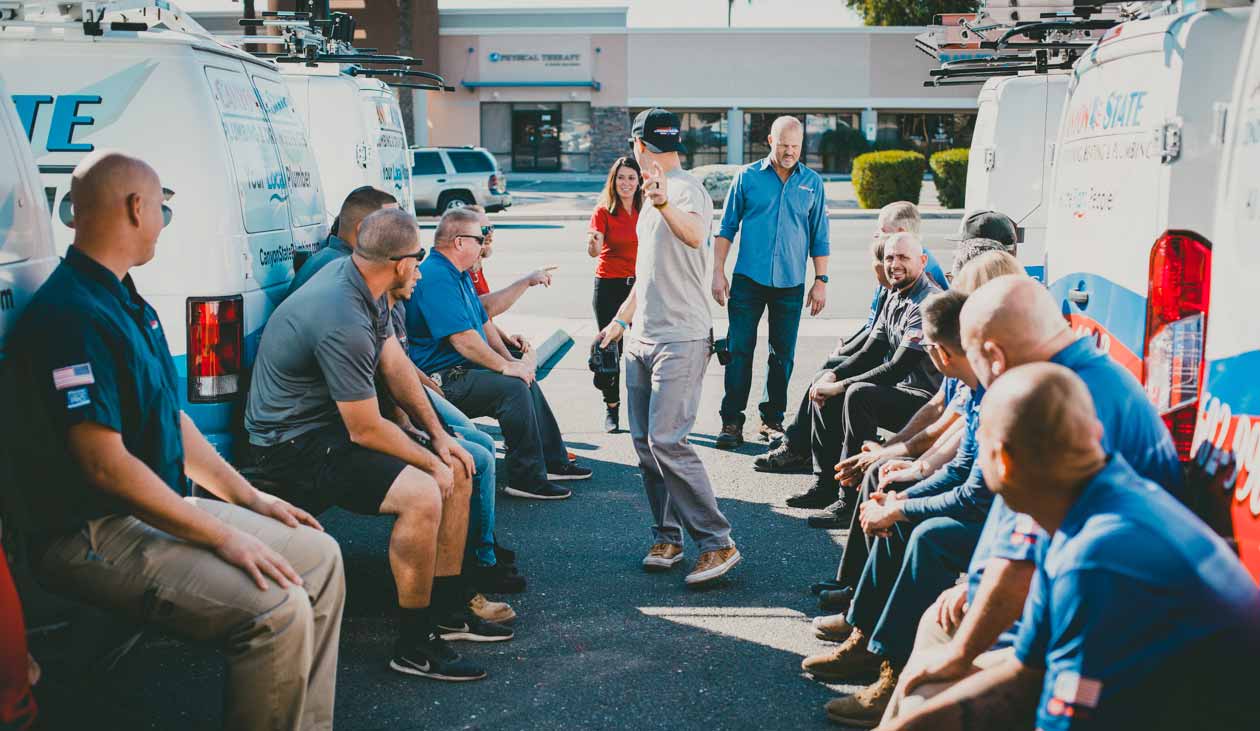
7 Tips to Create Original Photography Content.
Once you understand the value of authentic measures, it can be easy to become overwhelmed with ideas. Most business owners that tackle something new often get stuck in the planning stage. So the main key is to figure out what you need to capture most and do it!
1. Get Going On a Gameplan Today!
You don’t need professional help to create original photography content yourself. While the quality may suffer, it’s better than nothing at all. Like I said, it shows you’re proud of the business and have nothing to hide. Everyone has a smart phone that can easily capture a product, team picture, happy customer or people at work. If you want to start with the culture, then schedule a company photo and some basic headshots (at least for management) right now! Don’t go overboard or it won’t get done.
Until you get into the habit of capturing original content, you’ll want to make short strides. You can plan out different types of photography down the road. In order to make the most of your time, take as many pictures as you can. Since you’re not a professional, it’s going to be hard to know what the best angle will be. Besides, somebody is always blinking, standing awkwardly or making a disgusting face. A plethora of options is always better than 2-3 standard poses.
If it’s just you or a small group in the photographs, then you can always find someone willing to snap away for free. When you finally decide to create original photography content, do your best to be resilient. You’re going to run into some snags and will probably receive some pushback. But follow through. If you have a web development team, you can ask them to put your favorite photos online right away.
2. Please Consider Your Presentation.
To be frank, I’m not a big fan of shaving or dressing up for people in order to garner likes or obtain their business. When you’re not being yourself, it can be toxic to the original passion. But that doesn’t mean it’s OK to not care if you look like you just rolled out of bed. Having some sort of respect for who you’re doing business with is definitely important. If you can’t pull off a solid presentation for the camera, what do you think that communicates?
Taking Pictures Helps You See How You Look to Customers
When you create original photography content, it really helps you see how you (or your employees) might look in front of customers. This is one of the major things I touch on in my PreFocus process. While it’s important to be yourself, it can be hard to see past yourself. If one of your employees has a sloppy appearance or won’t stop slouching, it needs to be addressed. A bad attitude or poor professionalism can impact the entire culture – especially if they’re tenured with the company.
If the business is your baby then treat it as such! While it may be tough to get a good photo with “the guys”, I encourage you to try to be as serious as you can. Leading the business to brand equity is a big step that pays dividends. When everyone is working towards one goal, it’s a lot easier to come up with some cool ideas for pictures. In most cases, photography is used to communicate trust, competence and familiarity. So it’s on you to be recognizable while on the job.
How To Present Yourself When Photographing Original Content.
Instead of taking pictures of material things or posing at events, showcase your work and everyone involved. The idea is to create original photography content that captures people in their element. When people just look busy, it’s kind of cheesy. So try not to stage a lot of things and overdo it. It also helps when you’re able to incorporate branded merchandise (shirts, hats, pens, coffee mugs, etc.). Just make sure when it’s all said and done that the company’s presentation is consistent moving forward. Don’t let the photos be the only interpretation.
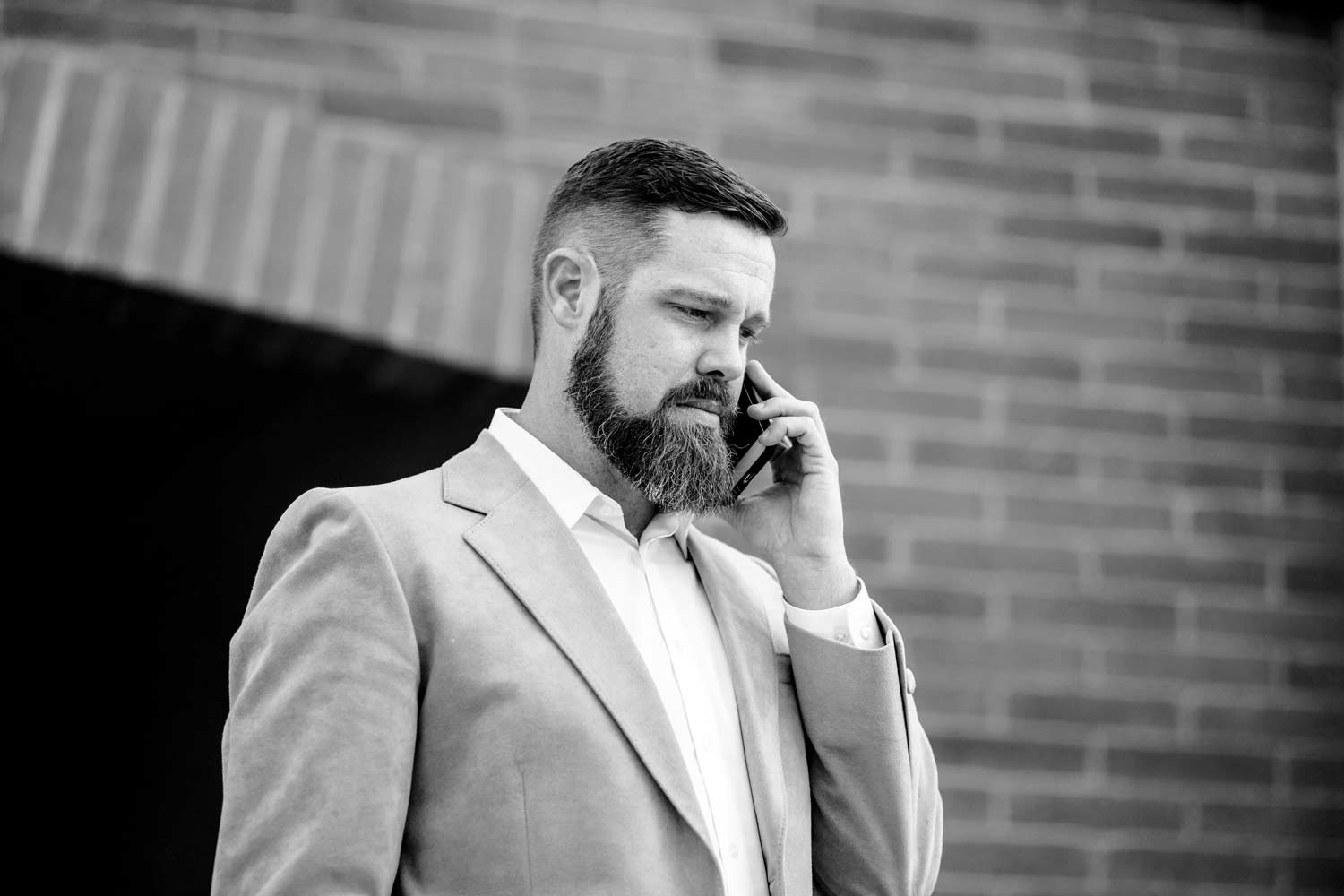
3. Consider the Angles You Capture At.
One of the worst things you can do when taking pictures is place the camera low. Although a nice hero shot (aiming up from the side as pictured above) shows authority, it’s better to leave this to the professionals. Angling up someone’s nose can be risky. Unless you’re trying to give the perspective of a toddler or puppy, chest height or higher usually works best. But don’t spend so much time of profile and team pictures. Over the shoulder or “heaven” shots (angled from above) work well.
However, when you create original photography content, it’s more about real moments in time, remember? You’ll want to take pictures as if you’re a fly on the wall or getting a bird’s eye view. A good way to do this is to capture the corners of different objects that are in the frame. A fence post, tree leaf, computer monitor or even the back of someone’s head can really add perspective to the photo. Leaving a bunch of empty space in the photo also allows you to add writing to the photos for future posts.
Shadows are the last thing you’ll want to consider when determining your angles. If a line of light is streaking across someone’s face then you’ll want to reposition them. Also, make sure you ask if anyone thinks they have a “bad side”. The last thing you want is to post images that people aren’t comfortable with or approve of.
4. Lighting Makes a Big Difference.
Speaking of lighting, there’s really only one way to go about removing shadows. This requires a 5 light setup (front, back, both sides, and a fill) that basically brightens every area around the spot you’re shooting. Most businesses don’t have this capability or even the need to. While standard indoor lights do hinder image quality, adding a “fill” light on the floor will help balance things out. A simple lamp and a “daylight” light bulb is enough.
As long as there’s an even amount of lighting in front of the camera or across the object your shooting, you should be fine. Don’t overdo it. Too much brightness is distracting and will cause squinting. Lighting behind a subject can give your picture a glow or halo effect, but it can also end up looking really bad! The easiest way to set up sound lighting is to just shoot near a window or go outside. Mid morning or an hour before dusk are usually good times to avoid a glare.
5. Know What You Plan to Capture.
If you’ve got a decent camera and someone to push the button, it’s always best to get your culture shots first. While this can be done with a timer, it takes a lot longer. Company portraits, followed by group (or department) photos and headshots are a good place to start. If you’re feeling froggy, try to get some natural shots of people interacting while they’re grouped together. We did this for one of our HVAC clients. It helped them create original photography content for each of their service teams.
Candid moments can involve the act of thinking, leading, collaborating, preparing, focusing and any form of interaction. The main goal is capture real life moments and the authenticity of people at work. It may be tempting to take pictures of personal leisure time, but it’s best to stick to the business side of things. For the most part, ideal customers don’t care about your car or fantasy football league. If you have a location or office then showcase its features.
Any way you can showcase some aspect of the customer experience, do it. Even images around the house can come in handy. If you’re a plumber, then there are plenty of things to take pictures of for your website and social media channels. You don’t need a big budget to have your wife click away while you’re inspecting the drain.

6. Know How You Plan on Editing.
At the end of the day, you don’t need supreme editing software to make pictures look good. But you ought to have some sort of consistency when it comes to your brand image. My point is, don’t have a super edgy photo one day then a soft black and white image the next. Knowing how you want to express the business is just as important as any general design. So before you go about spending time and money on an editing process, make sure you nail this down. Again, this is another important step to the PreFocus process.
Once you have image guidelines in order, anyone can take care of your editing for you. Most people on Fiver or Upwork will for it for a couple dozen dollars. If you want to keep things cheap, most smart phones and social platforms has enhancement options you can use before posting. Canva also lets you make some tweaks to photos. We personally use Adobe Illustrator, Photoshop and Lightroom for our original photography content. All three cost about $50/month and give us some gnarly options when it comes to editing media.
7. Keep All of Your Photos in Order.
The last tip I want to leave you with has to do with future strategies. Once you’ve taken and utilized your pictures, make sure you’re organizing them. You can store them in desktop folders, your Google drive, a cloud or share them on your intranet or company CRM. Categorizing and labeling all of your content helps you access it if ever necessary. If you need to write a blog about drain cleaning, then you already have the photos your wife took. If they’re edited and optimized for publishing, you just saved yourself a lot of time.
This is what a PreFocus is. You’re either working in your business or working on your business. When you think things through, you avoid setbacks and perform at a higher level. Hopefully this article gave you enough reason to create original photography content yourself.













